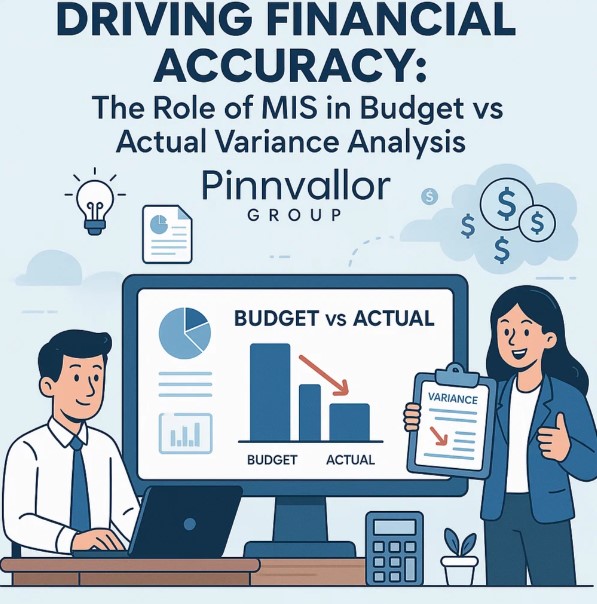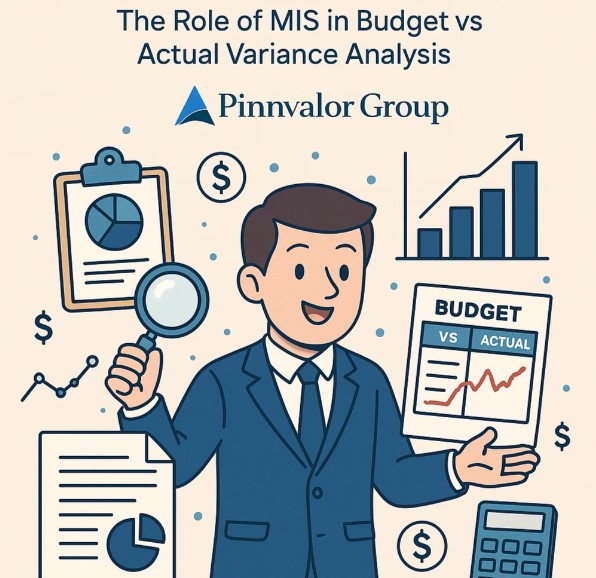
Driving Financial Accuracy: The Role of MIS in Budget vs Actual Variance Analysis
In today’s dynamic business environment, financial accuracy is not just about balancing the books—it's about making informed decisions that drive sustainable growth. One of the most powerful tools in achieving this precision is variance analysis, especially when comparing budgeted figures to actual performance. This process becomes significantly more effective when powered by a robust Management Information System (MIS).
Is your budget just a number—or a tool for real-time decision-making powered by MIS?
Financial accuracy isn’t luck—it’s system-driven clarity. MIS empowers teams to detect, analyze, and respond to variances with confidence.
What is Variance Analysis?
Variance analysis is the process of evaluating the differences between planned financial outcomes (the budget) and actual results. It helps organizations answer questions like:
- Are we overspending or underspending?
- Why did revenues fall short or exceed expectations?
- Which departments or activities are responsible for the variances?
By identifying these gaps, businesses can uncover inefficiencies, capitalize on strengths, and refine their future strategies.
The Importance of Budget vs Actual Comparison
Comparing budgeted amounts to actual results helps to:
- Monitor performance
- Identify operational inefficiencies
- Enhance forecasting accuracy
- Inform management and stakeholders
What is MIS and Why Does It Matter?
A Management Information System (MIS) is an integrated platform that gathers, processes, and presents data to aid in decision-making. It provides timely and accurate information across various departments, including finance, operations, and HR.
In financial variance analysis, MIS supports:
- Data consolidation from multiple sources
- Automated report generation
- Visual dashboards highlighting key variances
- Drill-down capabilities to trace root causes
How MIS Enhances Variance Analysis
1. Real-Time Data Availability
MIS provides real-time access to financial data, allowing managers to spot and act on variances instantly, rather than waiting for period-end reports.
2. Customized Dashboards & Visuals
Customizable dashboards help users visualize performance gaps and emerging trends clearly and intuitively.
3. Automated Alerts
MIS systems can send alerts when actual results deviate significantly from the budget, triggering immediate managerial action.
4. Drill-Down Capabilities
With MIS, users can click on variance figures to explore transaction-level data and understand the source of discrepancies.
5. Scenario Analysis & Forecasting
Advanced MIS platforms enable scenario planning and trend-based forecasting, helping improve future budgeting accuracy.

Practical Example
Scenario: A company budgets $100,000 for marketing in Q1 but ends up spending $125,000.
Without MIS: The overspend may be discovered too late, during manual review, without a clear cause.
With MIS: An alert flags the overspend instantly. Managers trace it to a specific digital campaign and can evaluate ROI immediately.
Benefits of MIS-Driven Variance Analysis
- Improved Financial Discipline: Automated tracking promotes accountability.
- Better Decision-Making: Clear insights lead to more informed business actions.
- Time Savings: Reduces manual work and allows focus on strategy.
- Continuous Improvement: Frequent reviews refine future budgeting and forecasting.
Final Thoughts
In an era where data drives decision-making, MIS acts as the bridge between raw data and strategic action. When used effectively, it transforms budget vs actual comparisons into powerful tools for business agility, performance improvement, and financial control.
Integrating MIS into your variance analysis process is no longer optional—it's essential for staying competitive and financially precise.
